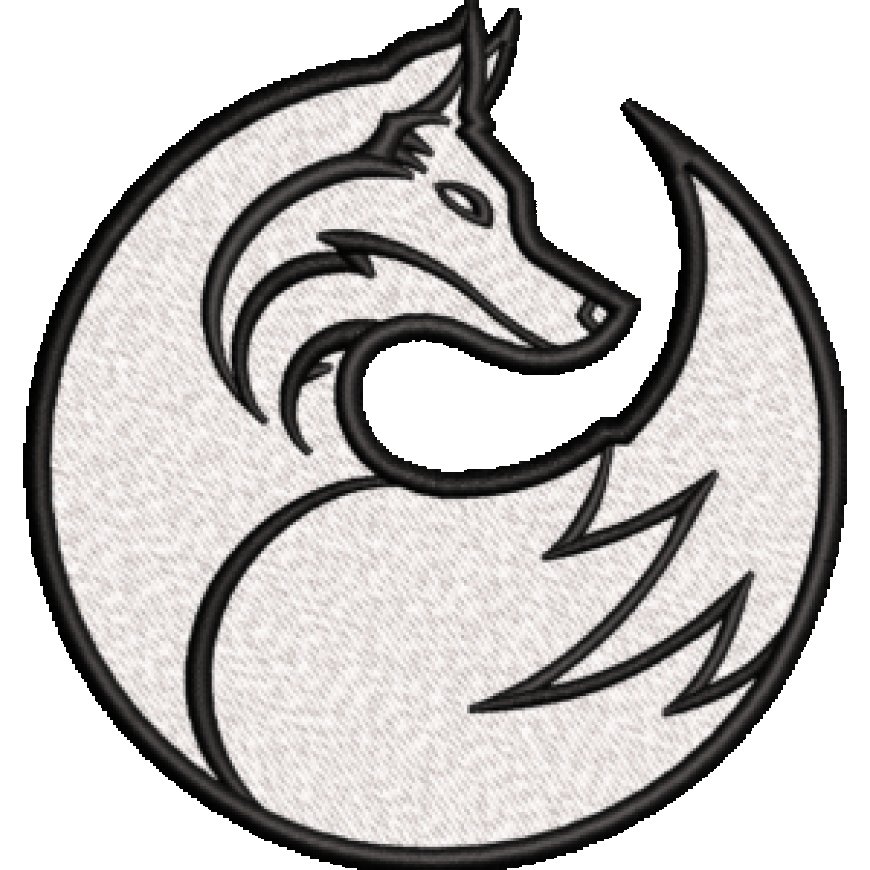Brother SE1900: Tips for Embroidering on Synthetic Fabrics
ZDigitizing is offering a wide range of digitizing solutions to meet the needs of businesses and individuals alike. With expertise in logo digitizing.

Embroidering on synthetic fabrics can be a challenging yet rewarding task. With the right tools and techniques, you can achieve stunning results. The Brother SE1900 is a versatile embroidery machine that excels in handling various fabric types, including synthetics. In this article, we'll explore essential tips for embroidering on synthetic fabrics using the Brother SE1900, and we'll emphasize the importance of understanding embroidery file types to enhance your projects.
Understanding Synthetic Fabrics
What are Synthetic Fabrics?
Description: Synthetic fabrics are man-made materials created from chemical processes.
Examples: Common synthetic fabrics include polyester, nylon, acrylic, and spandex.
Properties: These fabrics are often durable, lightweight, and resistant to shrinking and stretching.
Challenges with Embroidering on Synthetics
Heat Sensitivity: Many synthetic fabrics are sensitive to heat, which can cause melting or warping.
Slippery Texture: The smooth surface of synthetic fabrics can make them difficult to stabilize and embroider.
Stretchiness: Some synthetics, like spandex, are highly elastic, which can distort embroidery designs.
Preparing Synthetic Fabrics for Embroidery
Selecting the Right Stabilizer
Description: Stabilizers are crucial for preventing fabric distortion during embroidery.
Types of Stabilizers: Cut-away, tear-away, and wash-away stabilizers each have their own benefits for different types of synthetic fabrics.
Recommendation: For most synthetic fabrics, a cut-away stabilizer is preferred due to its strength and stability.
Hooping the Fabric Properly
Description: Proper hooping ensures that the fabric remains taut and stable during embroidery.
Technique: Place the stabilizer and fabric in the hoop, ensuring they are smooth and taut without being overstretched.
Tip: Use a hooping aid or adhesive spray if the fabric is particularly slippery.
Optimizing Embroidery Settings on the Brother SE1900
Choosing the Right Needle and Thread
Needle Selection: Use a ballpoint needle to prevent snagging and tearing of synthetic fibers.
Thread Selection: Polyester thread is recommended for synthetic fabrics due to its strength and elasticity.
Adjusting Machine Settings
Thread Tension: Adjust the thread tension to avoid puckering and ensure smooth stitching.
Stitch Length: A shorter stitch length is generally better for synthetic fabrics to prevent pulling and distortion.
Speed: Reduce the machine speed to have better control over the fabric and prevent errors.
Understanding Embroidery File Types
Importance of Embroidery File Types
Description: Embroidery file types determine how designs are interpreted by the machine.
Common File Types: PES, DST, and EXP are popular embroidery file types compatible with the brother se1900.
Recommendation: PES files are ideal for the Brother SE1900 as they store detailed color and stitch information.
How to Use Embroidery File Types for Best Results
Importing Designs: Use the USB port on the Brother SE1900 to import designs in compatible file types.
Editing Designs: Ensure that your designs are properly formatted and scaled before starting the embroidery process.
Saving Custom Designs: Save your custom designs in PES format to retain detailed stitch and color information.
Step-by-Step Guide to Embroidering on Synthetic Fabrics
1. Preparing Your Design
Description: Start with a well-prepared design that suits synthetic fabrics.
Solution: Use embroidery software to create or edit your design, and save it in PES format for optimal results.
2. Setting Up the Brother SE1900
Description: Proper setup is crucial for successful embroidery.
Solution: Turn on the machine, insert the USB stick with your design, and select the design on the touch screen.
3. Preparing the Fabric and Stabilizer
Description: Ensure the fabric and stabilizer are ready for hooping.
Solution: Cut the stabilizer to fit the hoop, place the fabric on top, and secure them tightly in the hoop.
4. Adjusting Machine Settings
Description: Fine-tune the machine settings for synthetic fabrics.
Solution: Select the appropriate needle and thread, adjust the thread tension, and set the stitch length and speed.
5. Starting the Embroidery Process
Description: Begin embroidering with confidence.
Solution: Press the start button and monitor the machine to ensure the fabric remains taut and the stitches are even.
6. Finishing the Project
Description: Completing the project requires careful attention to detail.
Solution: Once the embroidery is finished, remove the hoop, trim any excess stabilizer, and inspect the design for any final adjustments.
Common Issues and How to Troubleshoot Them
1. Puckering and Wrinkling
Description: Puckering can occur if the fabric or stabilizer is not properly secured.
Solution: Ensure the fabric is taut in the hoop and use a high-quality stabilizer.
2. Thread Breakage
Description: Thread breakage can be caused by incorrect tension or needle issues.
Solution: Check the thread tension, use a suitable needle, and ensure the thread is of good quality.
3. Skipped Stitches
Description: Skipped stitches can occur if the needle is not compatible with the fabric.
Solution: Use a ballpoint needle for synthetic fabrics to ensure smooth stitching.
4. Fabric Distortion
Description: Fabric distortion can result from excessive stretching or improper hooping.
Solution: Avoid overstretching the fabric when hooping and use an appropriate stabilizer.
5. Poor Design Alignment
Description: Misalignment can happen if the fabric shifts during embroidery.
Solution: Use adhesive sprays or hooping aids to keep the fabric in place.
Tips for Achieving Professional Results
1. Test on Scrap Fabric
Description: Testing your design on scrap fabric can prevent mistakes.
Solution: Use a similar synthetic fabric to test your design and make any necessary adjustments.
2. Use High-Quality Materials
Description: High-quality threads, needles, and stabilizers can enhance the final result.
Solution: Invest in reputable brands to ensure the best performance and longevity of your embroidery projects.
3. Regular Machine Maintenance
Description: Keeping your machine in good condition is essential for consistent results.
Solution: Clean the Brother SE1900 regularly, oil moving parts as recommended, and replace needles as needed.
4. Experiment with Different Designs
Description: Trying various designs can help you learn and improve.
Solution: Experiment with different patterns and techniques to see what works best on synthetic fabrics.
Conclusion
Embroidering on synthetic fabrics with the Brother SE1900 can yield beautiful and professional results when done correctly. By understanding the challenges and optimizing your machine settings, you can create stunning designs that stand out. Remember to use the appropriate embroidery file types, such as PES, to ensure your designs are accurately rendered. With these tips and techniques, you'll be well-equipped to tackle any embroidery project on synthetic fabrics.
FAQs
-
What needle should I use for embroidering on synthetic fabrics with the Brother SE1900? Use a ballpoint needle to prevent snagging and tearing of synthetic fibers.
-
Which embroidery file type is best for the Brother SE1900? PES files are recommended as they store detailed color and stitch information.
-
How can I prevent puckering when embroidering on synthetic fabrics? Ensure the fabric is taut in the hoop and use a high-quality stabilizer to prevent puckering.
-
What thread is best for synthetic fabrics? Polyester thread is ideal for synthetic fabrics due to its strength and elasticity.
-
How do I adjust the Brother SE1900 for embroidering on synthetic fabrics? Adjust the thread tension, use a shorter stitch length, and reduce the machine speed for better control and results.
What's Your Reaction?



























